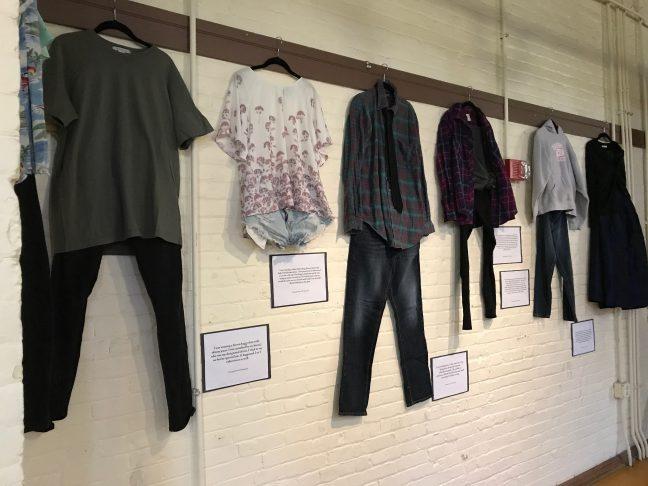ASM’s Title IX Advisory Committee held an art exhibit entitled “What Were You Wearing?” between April 5-10 to address rape culture on campus for Sexual Assault Awareness Month.
“[Survivors] get asked this question, ‘what were you wearing?’ — how can we shape that question and empower them when we ask it to them, and talk about why that question is irrelevant?” STIXA committee chair Megan Murphy said.
Inspired by Kansas University, “What Were You Wearing?” became a national campaign to tell the stories of survivors in an event centered on ending victim blaming.

Combining symbolic clothing and curated stories, the exhibit aimed to humanize the stories behind the statistics we often hear about sexual assault in college.
“So [the original creators] have a whole packet of information on how to host your own and how to make it individual and the other requirements and x, y and z,” Murphy said. “So we took that and ran with it, and created a UW specific version.”
All the stories depicted in the STIXA exhibit, except for one, were University of Wisconsin survivors’ stories — a fact that made the exhibit feel extremely personal and close to home.
On the walls of the Class of 1973 Gallery in the Red Gym, survivors’ stories were displayed near hangers holding accompanying clothing — the clothing each survivor wore when they were assaulted.
“In nature, it was a very explicit space, there were stories on the wall of sexual assaults and there were people telling their stories,” Murphy said. “As much as it was an empowering space, it was also a very difficult-to-grapple space.”
Because of the potentially triggering nature of the exhibit, STIXA ensured that trained advocates from UHS’s Violence Prevention and Survivor Services and the Rape Crisis Center were present at the exhibit’s opening reception.
Murphy said it was vital to have professional advocates at the event, to make sure everyone felt comfortable and confident attending the space. While Murphy and her co-host, Jenny Torner, were both present, the committee decided to recruit extra help to ensure a safe space.
“And so as comfortable as I am with the issues and as comfortable as I wish I would be to talk to everyone about it, there are people who do this as a job in their daily life and are trained to talk to people about it,” Murphy said.
First-year student Dominique Maderal curated the exhibit. Maderal had been creating dialogue with and hearing stories from survivors throughout the school year.
One story in the exhibit accompanied an empty hanger. The story attached described an individual who was having a consensual sexual encounter with their significant other, only for their partner to force them past their own boundaries of comfort.
“That one is really powerful for me, just knowing consent is a continuation and, even though they identified this person as their partner, and they identified them as someone they probably trusted and were really caring about, that even in the middle of that consent can switch when you are uncomfortable with something,” Murphy said.
In its five-day run, the exhibit attracted heavy traffic and valuable conversations due to its large community and university support, Murphy said.
More sex positivity, education essential to reducing campus sexual assault
Murphy said the committee specifically wanted to hold the event during SAAM because they knew the subject matter would already be heavy on the majority of students’ minds throughout the month.
Through awareness and diligence at the hands of the student body, Murphy believed the event represented a moment where students broke the silence surrounding sexual assault.
“There’s a lot of people doing a lot on campus and a lot of people who really care about this,” Murphy said. “So I think it’s a really trying time and I think it’s a really good time for people to be as active as possible about it.”


